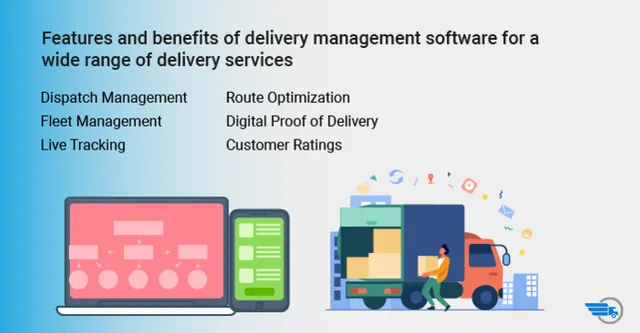
Delivery is a process in which an organization executes its promise to their clients. People expect an efficient and fast delivery in the modern day business. Companies adopt various strategies for improving their process. Delivery management software plays a pivotal role for fastening the dispatch work. This software provides advantages such as keeping consumers well-informed, keeping drivers updated, and improving the whole delivery process. Delivery management solution supports a wide range of delivery services such as grocery, gas, courier, medicine, eCommerce, food, laundry and field services.
Fleet Management:
Companies assimilate vehicles for their business to decrease the cost of operation. Fleet management is a process to oversee the fleet operations that include rider management, vehicle maintenance, route planning and fuel utilization to improve the productivity. Managing more commercial vehicles is an overwhelming challenge for fleet managers. Delivery Management Software plays an enormous part to organize the vehicle activities. If companies are unable to manage their own vehicles, then they will outsource it from an external fleet solution provider.
Live Tracking:
This technology is used to track the vehicle and get the authentic data of distance traveled. It helps to predict accurate delivery time. It also helps companies to reach their services to clients quickly and efficiently. Tracking is the motive behind the genesis of on-demand services which help consumers to meet their timely needs. This option helps to secure more sales for companies. Real-time tracking system gives continuous updates about in-transit shipments.
Route Optimization:
Optimization algorithm is developed to carry out automated planning of transportation of orders. This is where route optimization comes to play for enhancing last-mile operations. If any customer alters dispatch schedule due to his unavailability, then he should use a last mile solution. Automatic route optimization system helps consumers to put the routing on an autopilot mode for a timely delivery. It uses various platforms and resources to generate single optimized routes by considering weather conditions and traffic. If a delivery consists of multiple pick-up and multiple drop points, then route optimization will be useful for fixing an exact pick-up time and drop time.
Powerful Analytics:
Companies have direct access to data recorded from orders. By keeping track of data, clients can monitor the entire fleet. If the client checks the driver's performance, then he will know how to manage them in the future. This is an important feature as the client can gather details related to shoppers and customize the services based on their requirements. Clients can check the trip details and other reports which helps to predict budget and future planning. Detailed reports could be customized as per client requirements. It would help the client to eliminate the bottlenecks in the existing delivery network.
Dispatch Management:
Delivery management software assigns the dispatch automatically to delivery partners. If a registered consumer places his requirements, then the software will assign it to a driver. Drivers are using it to accept or reject orders. A web panel in the software access the data to know the status of the delivery. It sends the details to the customer throughout the process. It has a web link of map view where the purchaser can track the order. Once upon a time, operations managers were running behind the riders to know their presence. Nowadays, managers mark online attendance by using this software. They can view the track of deliveries done by a particular rider with the help of this software.
Digital Proof of Delivery:
Digital mode replaces manual processes. Digital Proof of delivery is better than paper process. This Transformation helps to know order's journey. Buyers can receive their bills digitally. Riders no longer have to carry paper documents. All digital proofs are located on a single device which the rider gets a signature from the customer after delivering the order. Employees will no longer spend time scanning all those papers or input those data manually into systems. This digital solution helps to save the paper and accelerate the delivery process. It frees up employees to focus on other tasks.